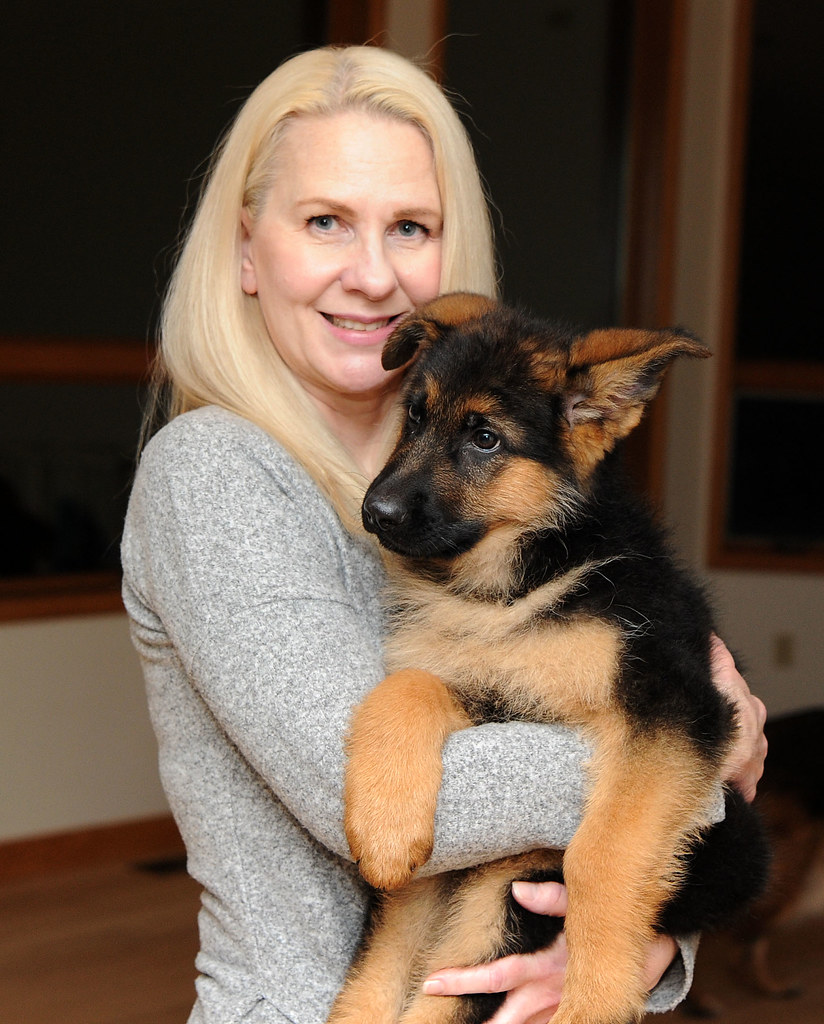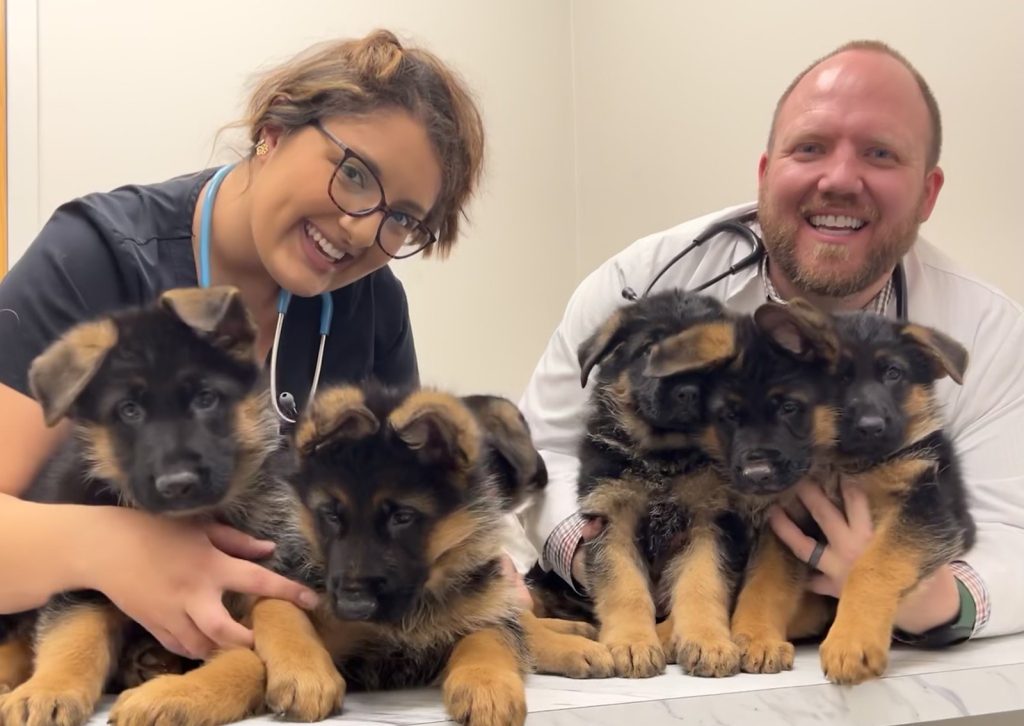Quiz: How Much Do You Know About German Shepherd Life Expectancy?
페이지 정보

본문
 Health Issues That Affect German Shepherd Life Expectancy
Health Issues That Affect German Shepherd Life Expectancy german shepherd kaufen Shepherds peak between the ages of 2 and 6. The German Shepherd is at its best in terms of mental and physical sharpness.
german shepherd kaufen Shepherds peak between the ages of 2 and 6. The German Shepherd is at its best in terms of mental and physical sharpness.They are more at risk for diseases of the musculoskeletal system, cancer, and other health conditions that can impact their lives.
German Shepherds of the working line usually lead more active lives than their show line counterparts. They require a diet that is rich in nutrients to help them maintain their high levels of activity and exercise.
Cushing's Disease
German Shepherds can suffer from several health conditions including elbow dysplasia and hip dysplasia. They also are susceptible to Cushing's Disease, degenerative myelopathy and hip dysplasia. Knowing these issues and taking the appropriate steps to prevent or treat them can help your dog live a longer and healthier life. Regular veterinary visits, proper nutrition, and regular exercise can keep this large breed in good health.
Cushing's disease (hyperadrenocorticism) occurs when a pet's body produces too much cortisol, a natural steroid. A tumor of the adrenal glands, or pituitary glands, is the most frequent cause of the condition. In about 80% to 85% of cases, the tumor is on the pituitary gland, which is a pea-sized organ near the base of the brain. In about 15% of cases, the tumor is on one of the adrenal glands which are located on the top of the kidneys.
Cushing's disease causes pets be more active and eat more than normal. The condition also causes increased thirst and urination. As a result, the pet will need to drink more fluids and go outside more often for potty breaks. Loss of hair, a potbelly appearance, and deutscher schäferhund kaufen a lack of energy are other symptoms of the illness.
A veterinarian can diagnose this disorder by drawing blood, and then performing the adrenocorticotropic hormone stimulation test. This test involves injecting ACTH into the patient and measuring the adrenal response. The results show the level of high or low cortisol levels are.
Once a dog is diagnosed with Cushing's Disease, it is required to take medication for the duration of his life. This medication will control the symptoms and slow the growth of the tumor. The majority of dogs suffering from this condition can live normal lives if they are properly treated and monitored. The condition can be fatal, however, in the event that it isn't treated or identified early enough.
Epilepsy
German Shepherds with epilepsy that is properly diagnosed and treated can live an extended and healthy life. However, a dog that suffers from seizures that are not controlled may be killed due to oxygen deficiency or a traumatic injury that occurs during seizures. Untreated epilepsy may also result in depression or a failure to eat or drink, which could rapidly lead to death.
How a pet's owner manages the condition can have an impact on the effects of epilepsy in German Shepherds. Owners who can closely monitor their dog's medication, and develop strategies to manage seizures, as well as build an effective network of support, will be more likely to prolong the pet's lifespan.
As with other breeds of dog German Shepherds are also susceptible to suffering from dental disease. If not treated, this condition can cause serious damage to teeth and Deutsche schäFerhundwelpen gums, and could cause infections in other parts of the body, including the kidneys, liver and the heart. Regular dental hygiene for dogs can lower the chance of developing this condition.
Shepherds are at a higher risk of bloat than other breeds due to their deep, narrow chests. This dangerous stomach disorder occurs when the intestines twitch and expand with gas, severing blood flow to the stomach and spleen. If not treated immediately this condition can become fatal in just 30 minutes. If your Shepherd is showing signs of bloat, such as Heaving, retching, or an enlarged stomach or is in a praying position (front feet are down, and the rear end is up) It is recommended to take them to an emergency vet right away.
German Shepherds who suffer from bloat have a higher risk of developing hip dysplasia or degenerative myelopathy. It is important to stay on top of your dog's veterinarian care and preventative measures.
Elbow Dysplasia
The elbow is an integral part of the humerus, (the long bone of the upper forelimb) as well as the radius and ulna, (the two bones of the lower forelimb). The three bones need to be perfectly aligned for a lifetime of motion. If they don't fit together properly, elbow dysplasia develops. It's the most frequent reason for dogs to be lame in their front legs.
In certain instances, the cartilage that lies between the bones can erode and cause swelling, pain and numbness. This damage cannot be reversed therefore it is crucial to diagnose and treat the condition as early as possible.
Early signs of the disease in dogs are a mild limp or an intermittent one, particularly after exercise or schäferhund Welpe Kaufen when getting up from a sitting position. As the disease advances the dog's elbow's range of motion decreases. There could also be fluid in the joint.
There are three kinds of elbow dysplasia. These include the Fragmented Coronoid Process (FCP), Osteochondrosis on the Humeral Condyle (OCH), and schäferhund kaufen welpe Ununited Aconeal Processing (UAP). Each of these conditions can be seen on both elbows or Buy a german shepherd one of them.
Screening for elbows and hips of breeding animals is the best option to avoid these issues. However, despite screenings, these diseases can still occur. The most effective method is to only breed dogs whose parents have been proven to have good elbows. This will ensure that the genes for elbow dysplasia don't pass to offspring.
Degenerative Myelopathy
Degenerative Myelopathy is an illness of the nervous system that slowly affects the spinal cord of German Shepherd dogs and causes weakness in the hind legs. DM symptoms usually manifest in older dogs and eventually lead to paralysis. The condition is thought to be a canine form of Lou Gehrig's Disease (amyotrophic lateral-sclerosis). It isn't known why some dogs with this condition develop it, while others do not, despite being genetically predisposed.
Unfortunately there is no cure for DM. The symptoms can be managed with medication, however the condition is progressive and causes paralysis of the forelimbs. Some dogs can live for months or even years with a high quality of life, but it is common for owners to choose to end the life of their pet when they are in a position where they are unable to walk or stand on their own.
Your doctor will conduct an examination for neurological disorders and will create an accurate medical record to determine DM. The neurologist will search for other conditions that have similar symptoms and will take blood samples to check for the genetic mutation associated with this disease. A cerebrospinal fluid sample may also be collected to permit analysis and exclude other diseases. The neurologist will likely recommend MRI imaging using our sophisticated diagnostic imaging services. This will allow your vet to pinpoint the areas of the spinal cord affected by DM and monitor progression of the disease over time. Physical rehabilitation therapy can be beneficial for DM sufferers and slow down the progression of the condition.
Intervertebral Disc Disease
German Shepherds are susceptible to health issues that may impact their lifespan. Recognizing these conditions and understanding how they affect your dog can help you take preventative action that supports their longevity.
Intervertebral Disc Disease occurs when the "doughnut" of the spinal disc fails to stay in its proper place. Each disk is surrounded by an outer fibrous ring that is known as an annulus and an annulus with a soft nucleus that absorbs impact. When the nucleus gets herniated it can cause severe pain and a paralysis. IVDD is typically an autoimmune process, but an accident that is sudden can cause herniation in dogs with weak disks.
Type I of IVDD is connected with the sudden rupture of the disc's nucleus material into the spinal canal. This causes intense pain, back pain and back arching, weakness in the rear limbs, and hind-limb lameness. It can be accompanied by incontinence, weakness, and incoordination. If the spinal cord becomes compressed and dies, your dog will become completely paralyzed and often unable to use their rear legs even.
The development of IVDD type II is more gradual and usually occurs in older dogs. Normal wear and tear causes the annulus fibers to grow larger with fluid. This causes compression and herniation of spine. This form of IVDD isn't caused either by trauma or heavy exercise, which is not the case for Type I. Signs include a reluctance or inability to turn the head.
- 이전글Three Of The Biggest Catastrophes In Buy A Driving License History 25.04.01
- 다음글Houston Truck Accident Attorneys 25.04.01
댓글목록
등록된 댓글이 없습니다.


